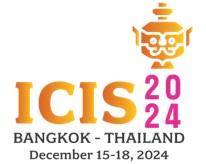Paper Number
2833
Paper Type
Short
Abstract
Drawing on the spiral of silence theory and informational social influence and using panel data from news posts on Facebook, we first determined two key stages of public opinion formation. Second, we empirically examined the relationship between perceived polarization of public opinion and user engagement and then examined whether the two stages of public opinion formation moderate the relationship between perceived polarization of public opinion and user engagement. Findings show an increase in perceived polarization of public opinion is likely to lead to more user engagement. However, regarding the heterogeneity in the dynamics across the two stages regarding the formation of public opinion (i.e., before and after the formation of public opinion), the effect of the polarization on user engagement is likely to be diminished when the public opinion is fully formed compared to when the public opinion is still forming.
Recommended Citation
Khobzi, Hamid; Animesh, Animesh; and Tripathi, Arvind, "Two Stages of Public Opinion Formation on Facebook: A Study of User Engagement" (2024). ICIS 2024 Proceedings. 6.
https://aisel.aisnet.org/icis2024/diginnoventren/diginnoventren/6
Two Stages of Public Opinion Formation on Facebook: A Study of User Engagement
Drawing on the spiral of silence theory and informational social influence and using panel data from news posts on Facebook, we first determined two key stages of public opinion formation. Second, we empirically examined the relationship between perceived polarization of public opinion and user engagement and then examined whether the two stages of public opinion formation moderate the relationship between perceived polarization of public opinion and user engagement. Findings show an increase in perceived polarization of public opinion is likely to lead to more user engagement. However, regarding the heterogeneity in the dynamics across the two stages regarding the formation of public opinion (i.e., before and after the formation of public opinion), the effect of the polarization on user engagement is likely to be diminished when the public opinion is fully formed compared to when the public opinion is still forming.
When commenting on articles, please be friendly, welcoming, respectful and abide by the AIS eLibrary Discussion Thread Code of Conduct posted here.



Comments
01-DigitalPlatforms